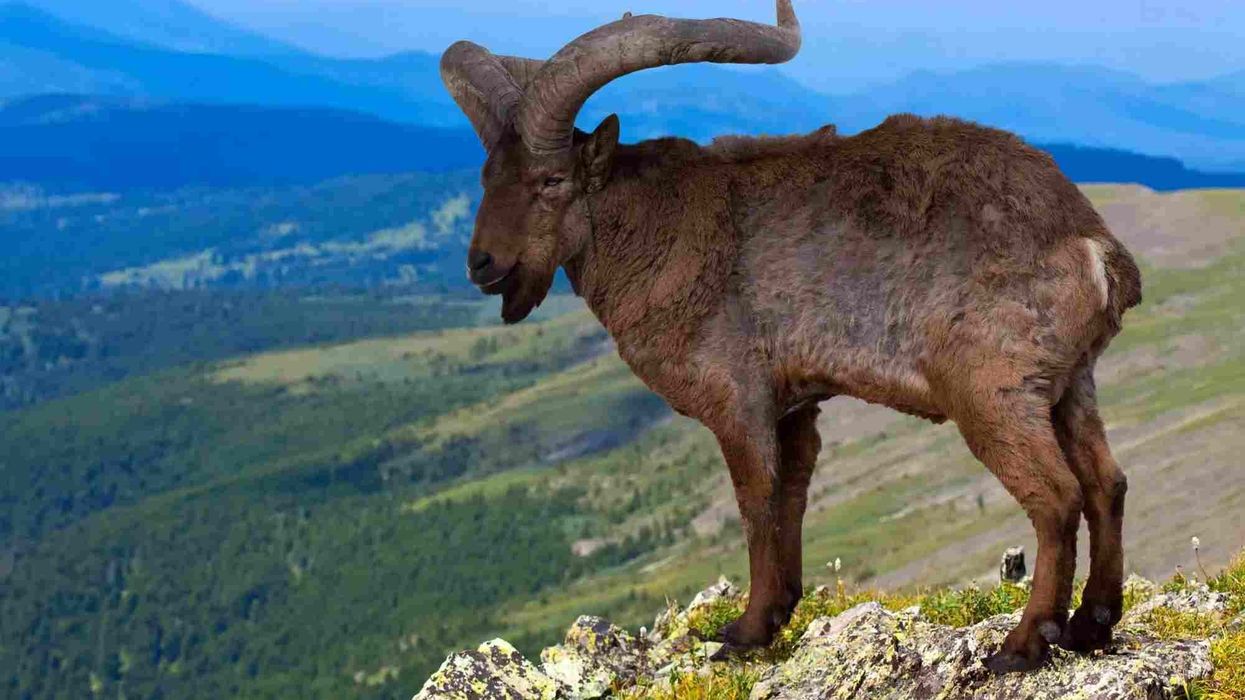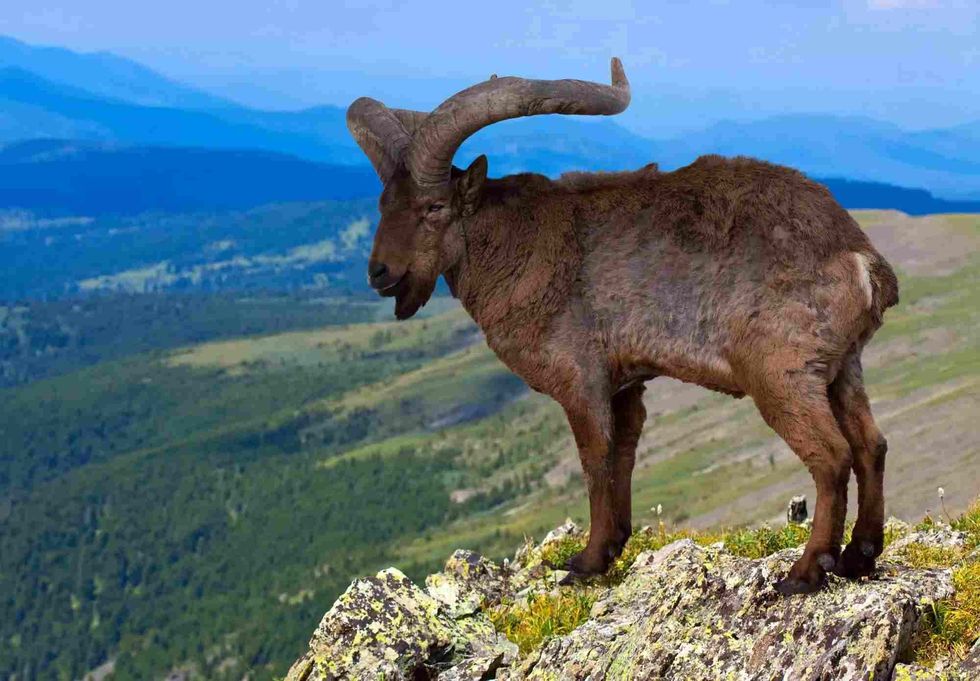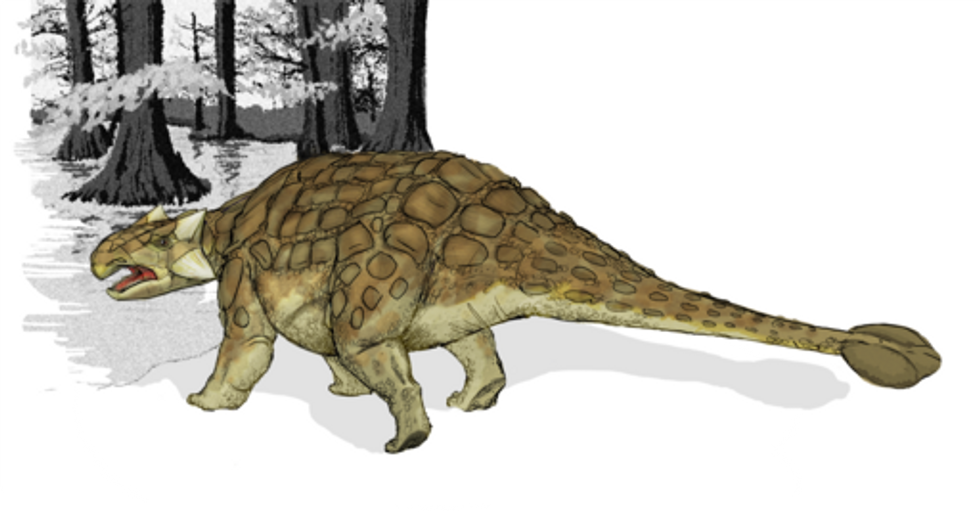The Caucasus mountains are known for their extensive vegetation and wildlife. These Caucasian turs are further divided into two categories the East Caucasian tur and the West Caucasian tur.
The East Caucasian tur range is from the east of Azerbaijan to the west, while Western Caucasian turs can be found in territories of European Russia and Georgia. Nevertheless, East Caucasian turs are occasionally deemed as a subspecies of West Caucasian turs.
They belong to the subfamily Caprinae that encompasses goats and sheep.
East and West Caucasian turs are distinguished from the rest of the goats because of their stiffed beard. As the territories of the east and west Caucasian tur overlap, this leads to crossbreeding, although it is an unusual phenomenon in the wild.
The Caucasica cylindricornis have a definite male dominating social structure. They choose to stay away from human interruption despite the fact that they are widely hunted.
Intrigued already? Then keep reading this article as more interesting facts are stated below. If you like this article, then make sure to check our other articles on reindeer facts and mountain goat facts as well.
East Caucasian Tur Interesting Facts
What type of animal is an East Caucasian tur?
The East Caucasian tur (Capra cylindricornis) is a typical goat antelope labeled as Daghestan tur, and are distinguished by their board body and narrow legs. These goats are very sturdy and agile and can climb and survive even in sparse vegetation.
What class of animal does an East Caucasian tur belong to?
East Caucasian turs belong to the class of mammals, family Bovidae, and genus Capra. The genus Capra consists of primarily domestic goats, like the markhor and the Ibex.
How many East Caucasian turs are there in the world?
The total number of East Caucasian turs present in the world is not estimated. However, the population of these goats has declined.
Where does an East Caucasian tur live?
The East Caucasian tur distribution range lies within the territories of the Greater Caucasus mountains, somewhere between 2624.7-13123.4 ft (800-4000 m) above sea level.
The regions extend from the Babadagh mountains (Azerbaijan) in the east, where the boundary is more defined till mountain Shkhara in the west, which is not very defined and tends to overlap with the territories of West Caucasian turs.
What is an East Caucasian tur's habitat?
Wild goats can be extremely adaptable even to extreme conditions. Caucasica cylindricornis prefer staying away from human disturbance; thus, open terrain with an elevation of 9842.5 ft (3000 m) is appropriate for them.
During summer, they migrate to higher elevations because they are heat-sensitive. At the same time, they require snow-free areas thriving with grass. Females can be seen in the forest region, while males are principally seen in the open grassland.
Who do East Caucasian turs live with?
The East Caucasian tur (Capra cylindricornis) have a special social hierarchy, where the young male turs are dominated by adult males during rutting season. The females are dominated by the young males, and the juveniles are dominated by females. Adult male turs are mainly solitary and dwell in the open terrain.
It is only during the breeding season that males and females are seen together. In comparison, female and young turs are found in the woodlands. The group size is generally small, with ten or fewer turs.
How long does an East Caucasian tur live?
The East Caucasian tur life term depends on whether it is in the wild or captivity. In the wild, their average lifespan is 15 years. Some of its major predators include wolves, lynx, and very seldom Persian leopards. In captivity, the lifespan increases to 22 years.
How do they reproduce?
Caucasia cylindricornis attains their sexual maturity by the time they turn two to four years old. The breeding season is from December to January, and they breed only once a year. The mating system is polygynandrous.
The males compete for the females, and the females tend to get aggressive too, particularly when the younger turs try to mate. After mating successfully, the females give birth to one offspring and, in rare cases, two. The gestation period is approximately 150-160 days.
What is their conservation status?
The conservation status of Caucasica cylindricornis, according to IUCN, is listed as Near Threatened. Once this species was of Least Concern, but due to excessive hunting and habitat loss, the species now face a major population decline.
East Caucasian Tur Fun Facts
What does an East Caucasian tur look like?
These turs are from the Caucasus mountains and are sturdily built with a broad body and short legs. The coat is commonly sandy yellow, and the stripes on the legs are absent, which is common in other species of the Capra genus.
The length of the tail of both males and females is almost 4-6 in (10.2-15.2 cm).
The base of their horn is cylindrical, and their horns curve outwards and are curled slightly towards the tips. The length of female horns is around 8-9 in (20.3-22.9 cm), and the male horn grows about 27.6-35.4 in (70-90 cm).
How cute are they?
East Caucasian turs are not like common domestic goats; they are relatively large and have horns that can appear intimidating to some people.
How do they communicate?
Male East Caucasian turs are mostly solitary; it is only during the mating season that the male and female come together. But not much has been documented regarding how they communicate.
How big is an East Caucasian tur?
An East Caucasian tur's size depends on its sex as it is sexually dimorphic, the male is 41 in (104.1 cm), and the female is 33 in (83.8 cm). They are smaller than the Nubian ibex, with an average body length of 42-49 in (106.7-124.5 cm) and 24-30 in (61-76.2 cm) tall.
How fast can an East Caucasian tur run?
The exact speed of the East Caucasian tur is not yet documented. But the West Caucasian tur can run at a speed of 7.5 mph (12 kph) while retreating to its shelter.
How much does an East Caucasian tur weigh?
The East Caucasian tur weighs approximately 123.5-308.6 lb (56-140 kg). They can weigh more or have weight equal to wild goats, which have an approximate weight of 71-243 lb (32.2-110.2 kg).
What are the male and female names of the species?
Male goats are known as bucks, and female goats are known as does. However, the exact name for the males and females of this species is not listed.
What would you call a baby East Caucasian tur?
The exact term for a baby East Caucasian tur is not listed. But, baby goats, in general, are known as a kid. The average litter size is one, and in some extraordinary scenarios, two offspring are born.
The gestation period is approximately six months, and the weaning period is around two to three months. During the weaning period, the mother takes care of the offspring and provides grooming, food, and protection. The offspring stays with the mother for one year.
What do they eat?
The East Caucasian tur diet consists of grasses and shrubs. It eats mainly bilberry, especially during winter.
Are they poisonous?
No, they are not poisonous.
Would they make a good pet?
These goats are not being domesticated but hunted largely. They prefer to live in the wild. Hence it is better not to domesticate them.
Did you know...
The coat of the male East Caucasian tur changes with the season. In the summer, the coat is rusty brown, while in winter, their coat color changes to chestnut brown.
How many species of tur are there?
There are two types of Caucasian turs, the East Caucasian tur (Capra cylindricornis) and the West Caucasian tur (Capra caucasica), divided by regions.
How much does the East Caucasian tur weigh?
East Caucasian turs are pastures throughout the day and eat mainly grasses and shrubs. They have a thick body, shorts, legs, and horns. Their body weight is approximately 123.5-308.6 lb (56-140 kg).
Here at Kidadl, we have carefully created lots of interesting family-friendly animal facts for everyone to discover! Learn more about some other mammals from our Chinese water deer facts and duiker facts pages.
You can even occupy yourself at home by coloring in one of our free printable running deer coloring pages.









